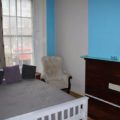INVESTMENT
According to the Times Rich list, 40% created their wealth through property. The other 60% invested in property as a means of growing and protecting the wealth that they created in other industries. In fact, more millionaires attain their wealth through property than any other type of investment.
Why Invest In Property?
The UK population are living much longer than we have done previously and the Government continues to struggle to support us into our retirement. Pension schemes are no longer sufficient and the return on savings in the bank is at an all-time low. Unless we do something now to look after ourselves in the future, it’s likely that working past the normal retirement age will quickly become the norm and as a result, the standard of living throughout the later years will become much poorer.
There are three things that people generally choose to do:
• Start a new business
• Invest into the stock market
• Invest into property
From our experience, we have found that investing in property is by far the most risk-averse, hands off and financially rewarding option. One of the main reasons is that the UK has always been and will always be a hugely popular place to live. We’re on an island with a very stable population. Land is limited, therefore prices will continue to grow and property will continue to be high in demand.
Buy to let property – the best performing asset class
In April 2015, buy to let property was highlighted as the best performing asset class when researchers compared its returns to other investment types such as UK shares, cash ISAs, government bonds and commercial property. Since 1996, buy to let investors will have achieved returns of almost 1,400% – highlighting that every £1,000 invested into buy to let property would be equivalent to £14,897 today.
What would happen if you invested in shares?
One of the main reasons that investing in property performs so well, is because we can invest using other people’s money, typically in the form of a mortgage or other lending facility. For example, if we had a sum of £50,000 to invest then we could buy £50,000 worth of shares. If they performed well and achieved a growth rate of around 7% per annum, then after 10 years the value would be £98,358 (close to £100,000). This is a 100% return on our investment.
What would happen if you invested the same sum into buy to let property?
However, if we used the same £50,000 and invested it into property then we could purchase a property that was worth approximately £160,000. This is achieved through using a mortgage or other lending facility. Given the current market conditions let’s assume that the property market also increases in value by 7% per annum (even though it increases at a higher rate in normal market conditions). After 10 years the property has increased in value from £160,000 to £314,744 (rounded up to £315,000). Our original investment of £50,000 is now worth more than £265,000. That is a return on our investment of over 500%.
We must consider that we will have interest to pay for borrowing this money. But this cost will be covered by tenants who will rent the property from us and there will almost certainly be a surplus income which we can spend however we want. Therefore our investment has significantly increased in value over time and it has given us additional income to help improve our lifestyle. The most important thing, is that the property will be tenanted for as much of the time as possible. Therefore it should be in an area of high rental demand, close to good transport links, nearby bars, shops and restaurants or close to universities and business districts.
£100,000 property example
A typical yield we look for is 8%, this equates to an annual rental income of £8,000 or £667 per month. The typical deposit needed to buy this property would be 25% which equates to £25,000. This means that we would need to borrow £75,000. The interest payment on this would typically be around 4% per annum. This equates to £3,000 per annum or £250 per month. Monthly rental income (£667), minus monthly mortgage payment (£250), equals £417. Let’s assume monthly costs of £75 per month. This equates to a net income of £342 per month which we can use how we like. Once we build up a portfolio of say five properties we have an extra monthly income of £1,710. This doesn’t even take into consideration the capital growth discussed earlier.
Investing in property is both useful and flexible for many reasons. Aside from the obvious financial gains, it can be used to help you achieve specific goals. For example, if you want:
- To earn a higher interest rate than leaving your money to sit in the bank
- To earn a higher interest rate than bonds, ISA’s and other saving schemes
- To build a portfolio that will give you enough income to retire
- To earn more money to improve your lifestyle
- A hands off investment that requires very little of your time
- High yielding returns on capital
- To invest for your children’s future
- A safe and secure investment
It is important that you know what you are trying to achieve from investing in property. Rasons will help you plan an investment strategy and work towards achieving those financial goals. For more information on property investment please get in touch with Kamran Raza at 020 3903 6420 or kamran.rasons.co





